Match Worn Jerseys
A Buyers Guide
How do you know if a Jersey advertised as a ‘match worn international Jersey’ is the real deal, In the art world where works of art regularly change hands for vast sums of money and if large amounts of money are there to be made, you will of course find your ‘FORGORIES’ made to imitate the look of a genuine piece of art. What have I learnt from TV programmes suchas the BBC’s Fake or Fortune, is that doing your research is key.
I have heard stories of certain individuals who will doctor a jersey to make it look like the genuine article, adding match details to a replica jersey, adding a number, cutting the sleeves to match the length to imitate what was worn in a game all done to deceive a collector out of his money. These often get attributed to the big name players who will attract a premium price.
I have helped many Rugby museums, auctioneers and collectors around the globe identify Jerseys and I have also been told previously that I don’t know what I am talking about.
No one wants a collection full of fakes, the collector market is full of these, signed photographs and signed replica jerseys are an easy way for a fraudster to make money, sometimes these are sometimes not easy to spot, but this article is focusing on match worn Jerseys - but it shows a clear driving force behind why a jersey will be doctored ‘Money’.
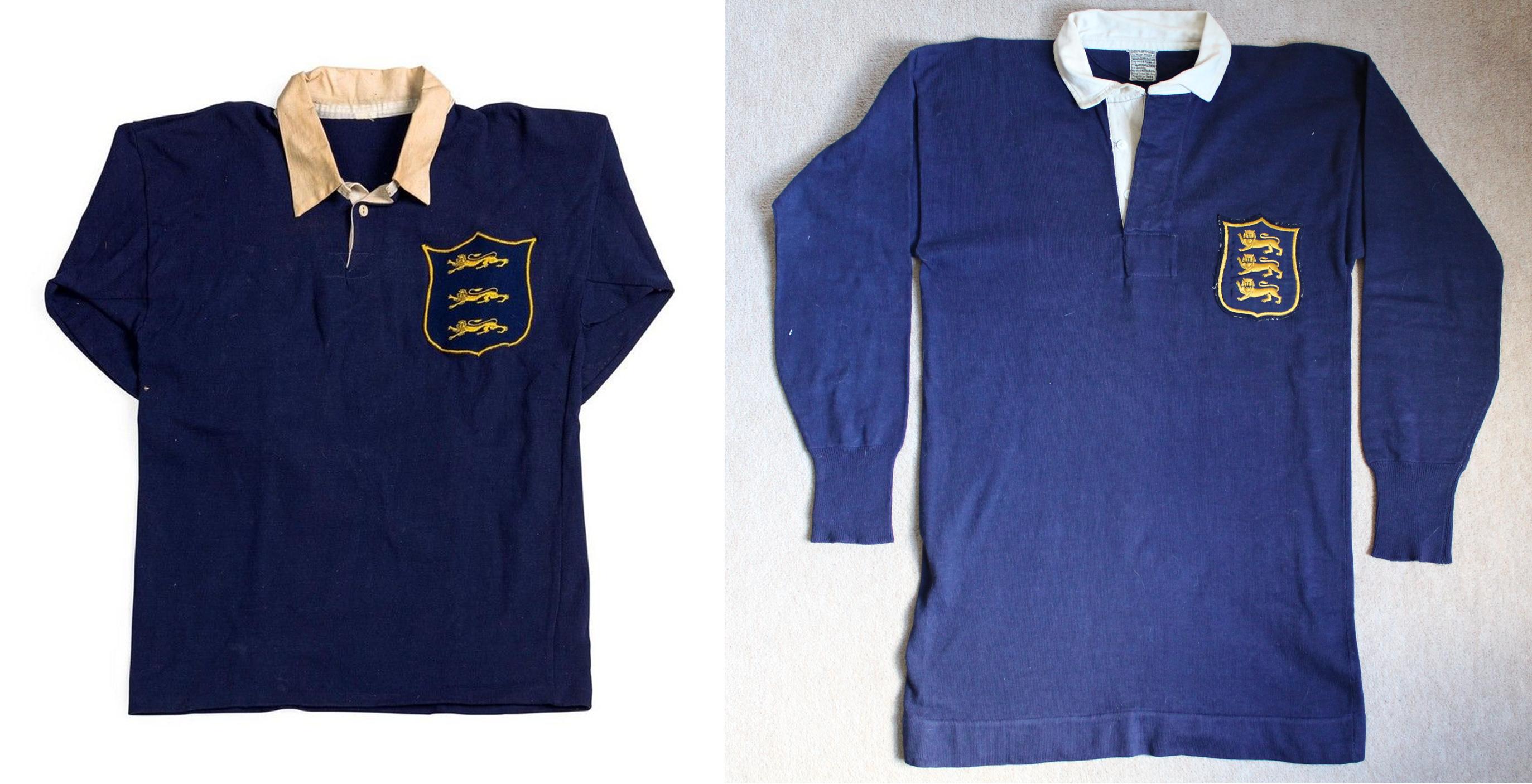
1930 British Lions - the fake (left) & Authentic (right)
A France no:15 is always a Blanco or a Wales no:9 is always Edwards, You shouldn’t take someone’s word as gospel, Just because a seller claims a Jersey was worn by someone it doesn’t mean it was.
I have bought jerseys off ex-international players who are not often sure who they swapped jerseys with, especially if they have played against for example Ireland in the 80s on multiple occasions. (& have multiple Jerseys of a specific nation). That’s not a bad thing, as you know the jersey you are buying is genuine, but you will need to look into this further by looking at specifics that can help narrow down a date a jersey to either a specific time period or exact match if you’re lucky.
So when a Jersey I am interested in appears what are the basic things I look out for? The following is a checklist that I follow before buying anything.
Provenance
A signed card, or paperwork stating the exact match the jersey was obtained in - signed by the player is ideal or a photo of the player with the said jersey. If you are buying direct from a player I would recommend you creating this record.
Where the Jersey came from (descendant/family/clubhouse/charity auction) are things I would like to know. Hearsay doesn’t really cut it.
Research
A numbered international jersey appearing, but has lost its background and the original recipient is no longer known is something I get regularly asked to help with ‘prior to the days when match details are added to a jersey’. Lets take a Wales jersey for example, The first thing I look at is the overall jersey, what time period does the badge on the jersey match up to. The Welsh feathers remained very similar from 1953 until 1979, the next thing I look at is the manufacturers label 'which is hugely important' as the design of these changes every few years. What you often find is that you will be able to narrow it down to within a specific period, but you can go no further. If a jersey claims to be from 1974, but the manufacturers label wasn’t used for example by Umbro until 1977 then it cannot be from 1974.
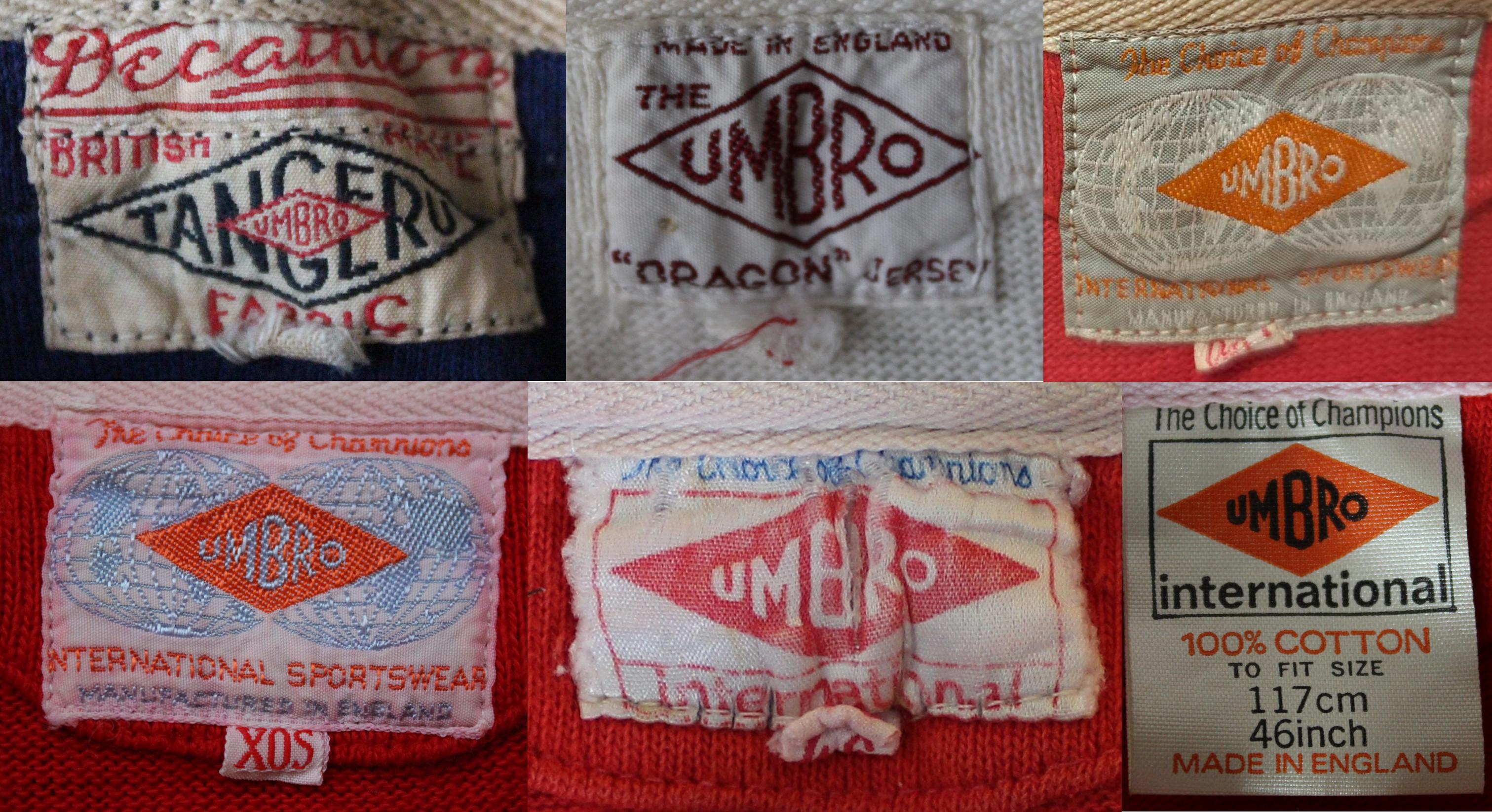
A selection of Umbro labels dating between 1951-1980
Number/Letter
These will vary, Umbro, Bukta, Forsyth, Canterbury, Adidas & Maxmore all have their own design and have changed over time. If a Jersey claiming to be worn in a specific match has a white square patch with black number & match photos show something completely different then it can’t be from the said match.
The material of a number can also vary.
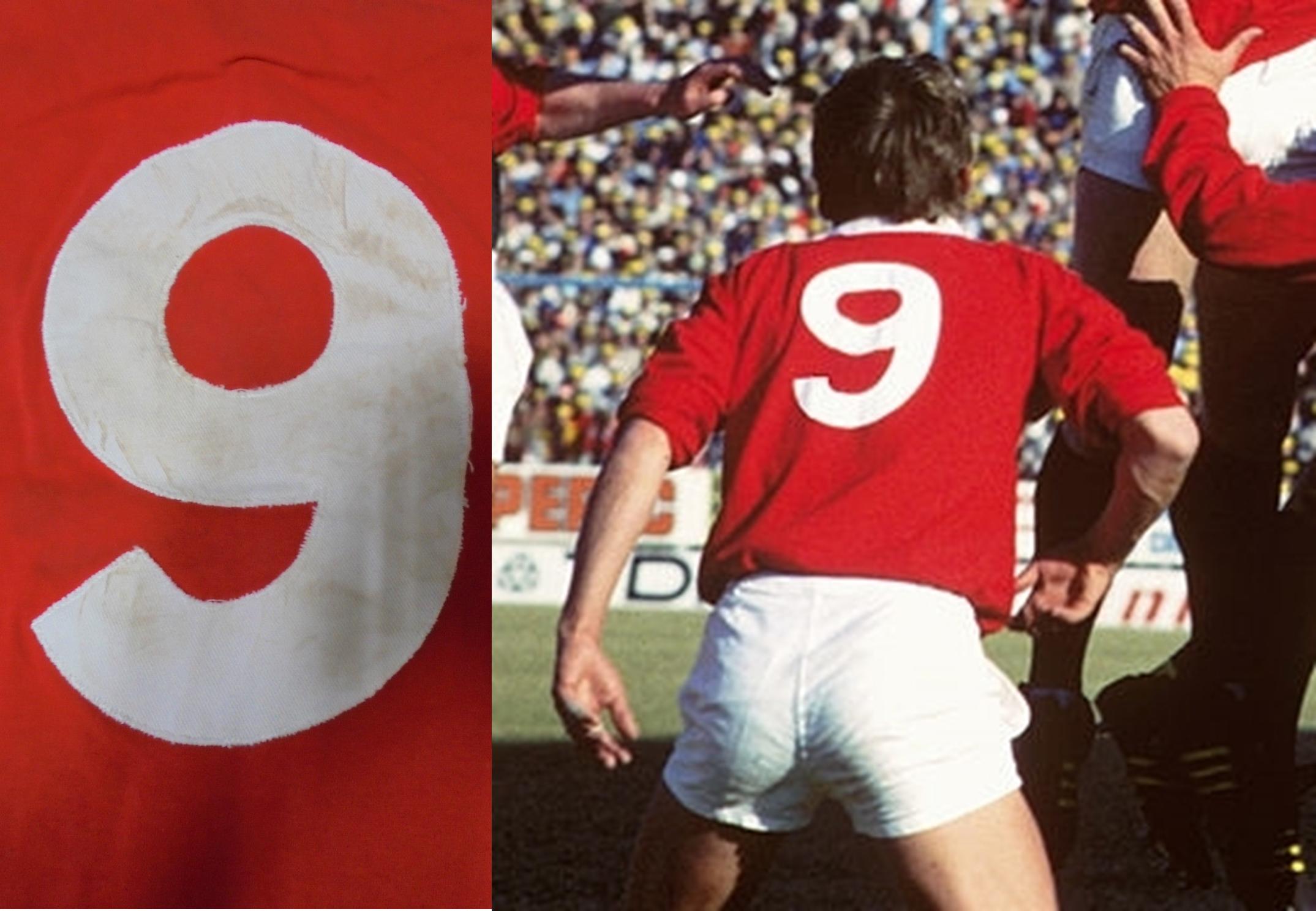
This Jersey originally claimed to be from the 1980 Lions series,
but clearly the number is a different font, before later claiming to be from a different tour, luckily the buyer was made aware of this information before getting his money back
Match footage/Photographs/Old magazines
If you have access to match footage, look out to see if players damage their jersey & change into another mid game. Youtube & Getty images both being very useful resources for looking up specific matches.

1997 Western Province v British & Irish Lions – Graham Rowntree - starts match in a no:1 Jersey, damages it 6 mins into the game, changes to a un-numbered long sleeve jersey, appears in the 2nd half in a short sleeve Jersey – the team remained on the field at half time, we presume he cuts the sleeves off at HT.
If you get offered a white Scotland Jersey & look up photos from the match only to see they wore Navy blue, it doesn’t always mean that it's not genuine, it’s possible the seller doesn't know and it was actually worn in another match 'or they were misinformed when they bought it'. Mud stains are another to look out for, if they match up then you’re in business.
Ideally you hope you can see players swapping jerseys after a said international.
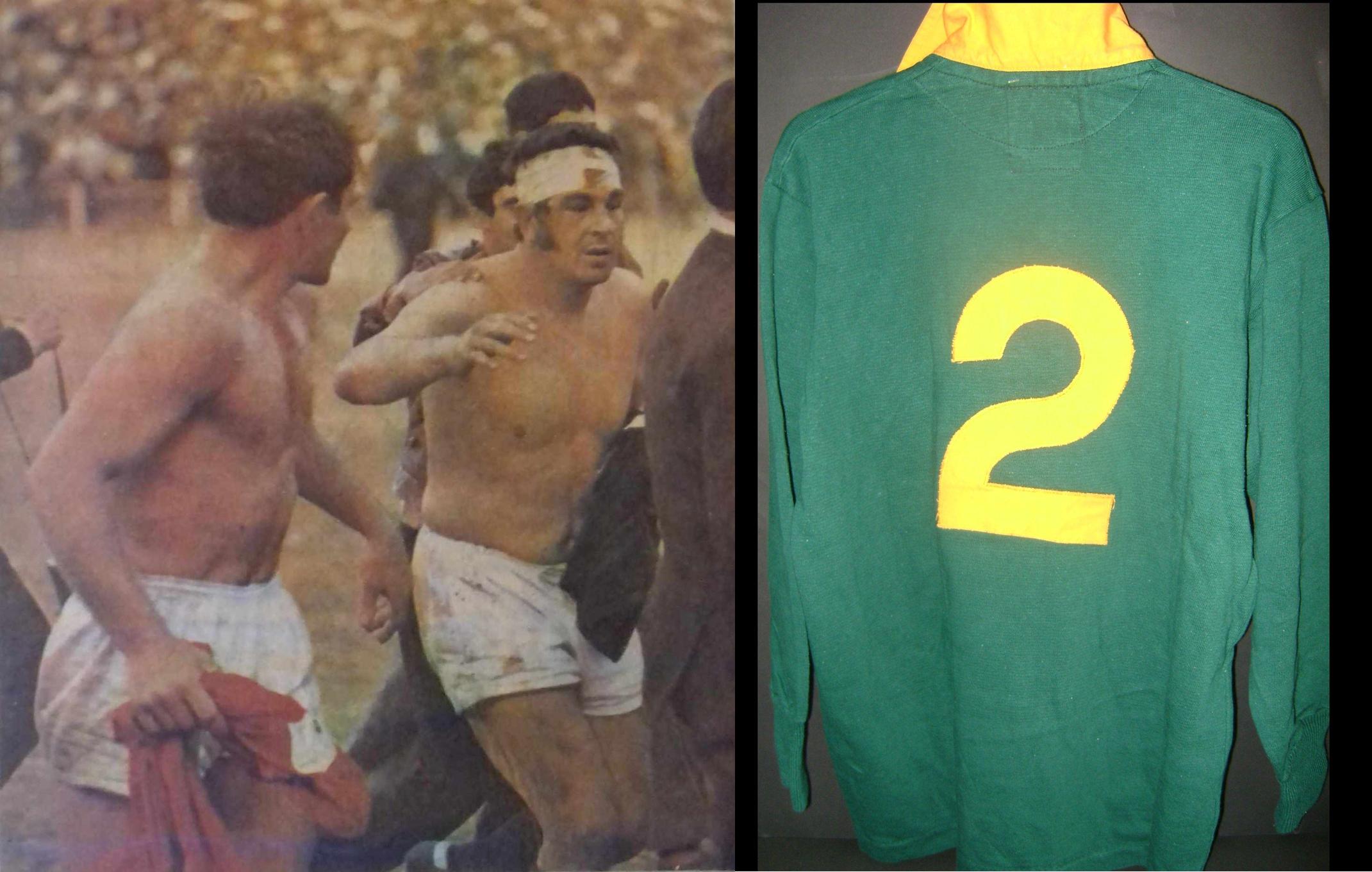
1974 South Africa v British Lions 4th Test Piston Van Wyk & Bobby Windsor
Exchange Jerseys after the final whistle
The badge
These will often change as the design alters as time moves on, so looking out for small details suchas a Tasmanian Lion on the Australian Coat of Arms being on all fours and upright on another '1982 it's upright & 1984 on all fours'
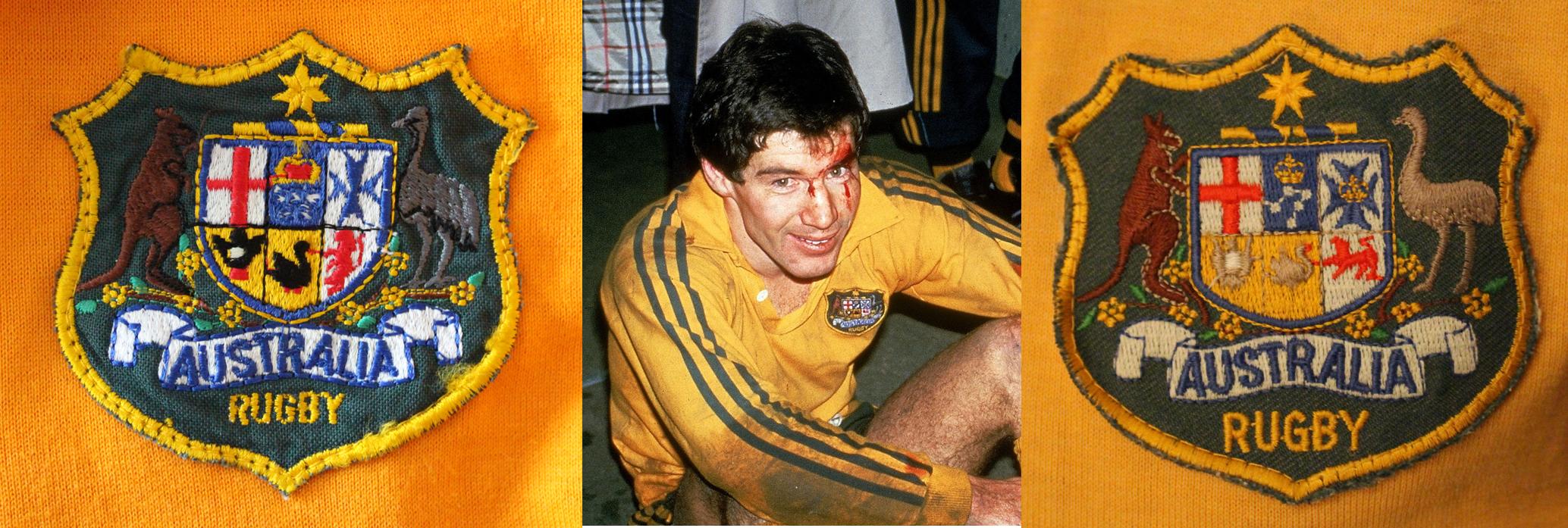
Left 1981/82 tour, Centre 1984 v Barbarians, right 1986 Badge
A French Jersey at a recent auction claimed to be from a certain match, but detailed photos available online showed that the badge included the name & year they played the opponent with the one up for sale not having this.
Squad numbers
In years gone by International touring sides would issue each member of the squad a number eg: 1-30 and the player would wear this number in all matches on a tour, varying from position/alphabetically from team to team – then some would wear 1-15 in a Test and the squad numbers for the tour matches. This will require you to look in programmes/books/footage/photos on the tour as this varies.
Made up provenance
This can be a difficult one to spot and isn't always the case, but when a jersey is proven to not be worn by an international or specific match (research proved otherwise), it then reappears at a later date with a new identity, with no further research or background checks to back up latest claims. A committee man, kit man or players manager gave them the Jersey being the change in story. Whether you believe word of mouth is up to you.
Anomalies will exist
Certain tourists like the 1974 British Lions wore Umbro Jerseys throughout the tour, that is until the 4th test, where the team wore a set of Jerseys made by Maxmore 'the large block sized number being the thing to look for' but in this match for unknown reasons 3x of the Lions decide to take to the field in their Umbro Jerseys.
Whether teams wear 2 or 3 different sets of jerseys on a tour all need to looked into further, the 97 Lions for example is probably the most complicated of all the Lions tours. They wear a mix of squad issue, replicas and maxmore made jerseys 'with variations of the number worn as well'
Knowing how many jerseys have the match details on will help, it varies from team to team but previously a 1st half jersey would include the match details and the 2nd half would not. Then some players would wear the unembroidered Jersey in the first half and not wear the Jersey with the details on 'you will need to look this up, it's not straightforward' – most teams now give players two fully detailed up jerseys for each international 'but again this is not always the case'
Where to buy/sell/donate
In an ideal world 'myself being a collector' you would like to be approached directly and get the opportunity to obtain a jersey.
A problem with many auctioneers is that the jerseys they have are often incorrectly listed, wrongly dated or attributed to specific player, this is when many genuine collectors point these errors out to the auctioneer 'often without a thank you' making some reluctant to give out this information in the future for other individuals to profit from. Remember the fees charged to buyers and sellers can be often around the 30% mark. Overpricing as an auction estimate will put buyers off 'many jerseys have flopped due to this and remain unsold'
In saying that there are advantages of going to auction – you will get some that fly and go beyond anything collectors would expect.
In recent times we have seen an upturn in rugby clubs/museums selling jerseys and other memorabilia that was donated/loaned to them many years ago, as clubs feel the financial pinch. On a few occasions families that donated items are appalled to see their relatives items up for auction, often not being made aware this was happening until a catalogue has been published (resulting in the LOT being pulled from the sale and returned to the family) If buying at auction it is definitely worth checking with the auctioneer to see if there will be any comebacks down the road.
I suppose it will depend on what you want from your items – whether they wish to donate to a museum, collector or go auction it’s entirely upto the individual.
If you are not sure then ask another collector, I will often ask close friends of mine who will have better knowledge than myself when it comes to All Blacks, France, South Africa & other nations.
There will be other small details to look out for, as your knowledge grows.
Don’t be a fool, if you are not 100% happy with what’s been offered then walk away.
Peter Douglas-Davies
12/11/2023